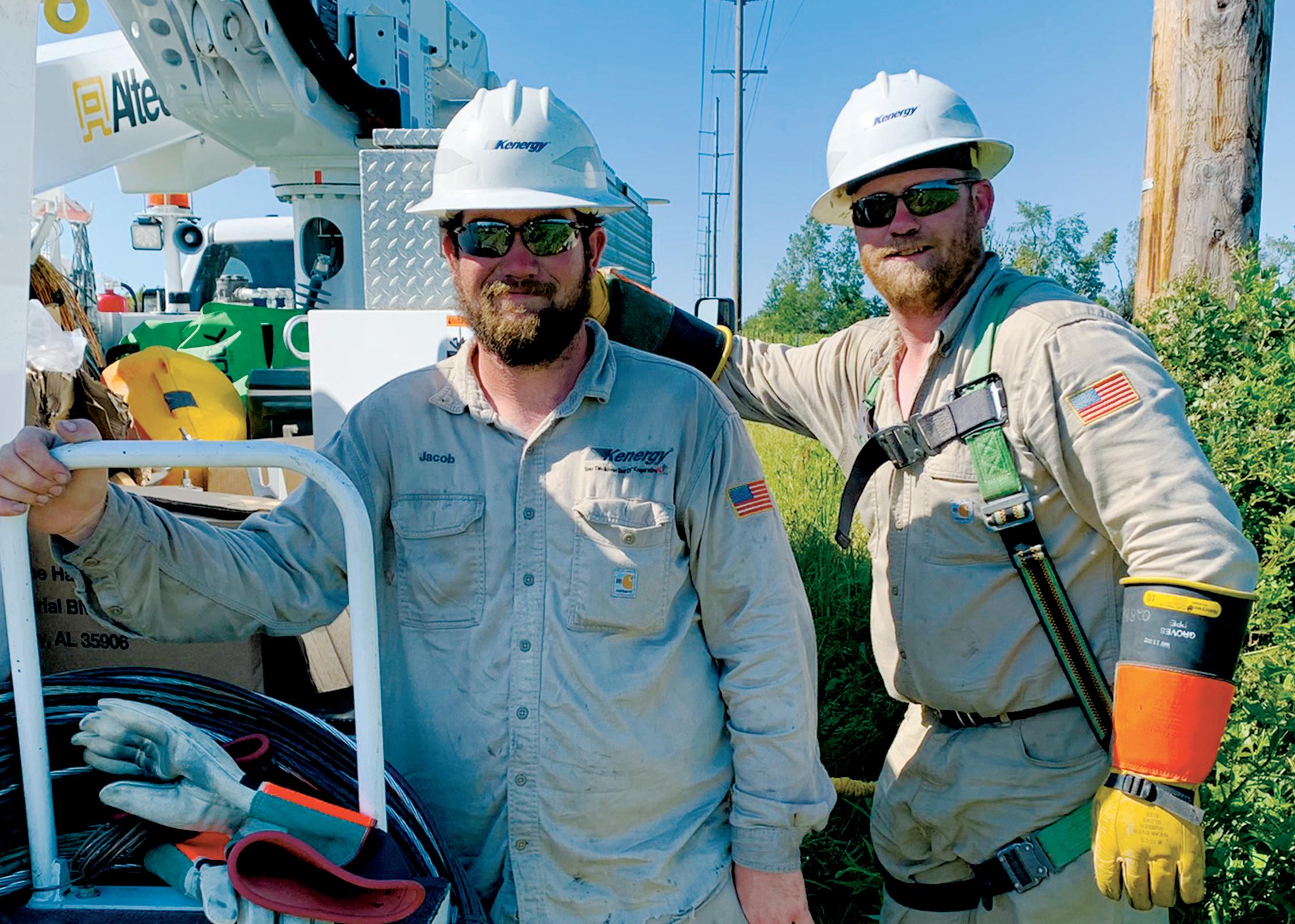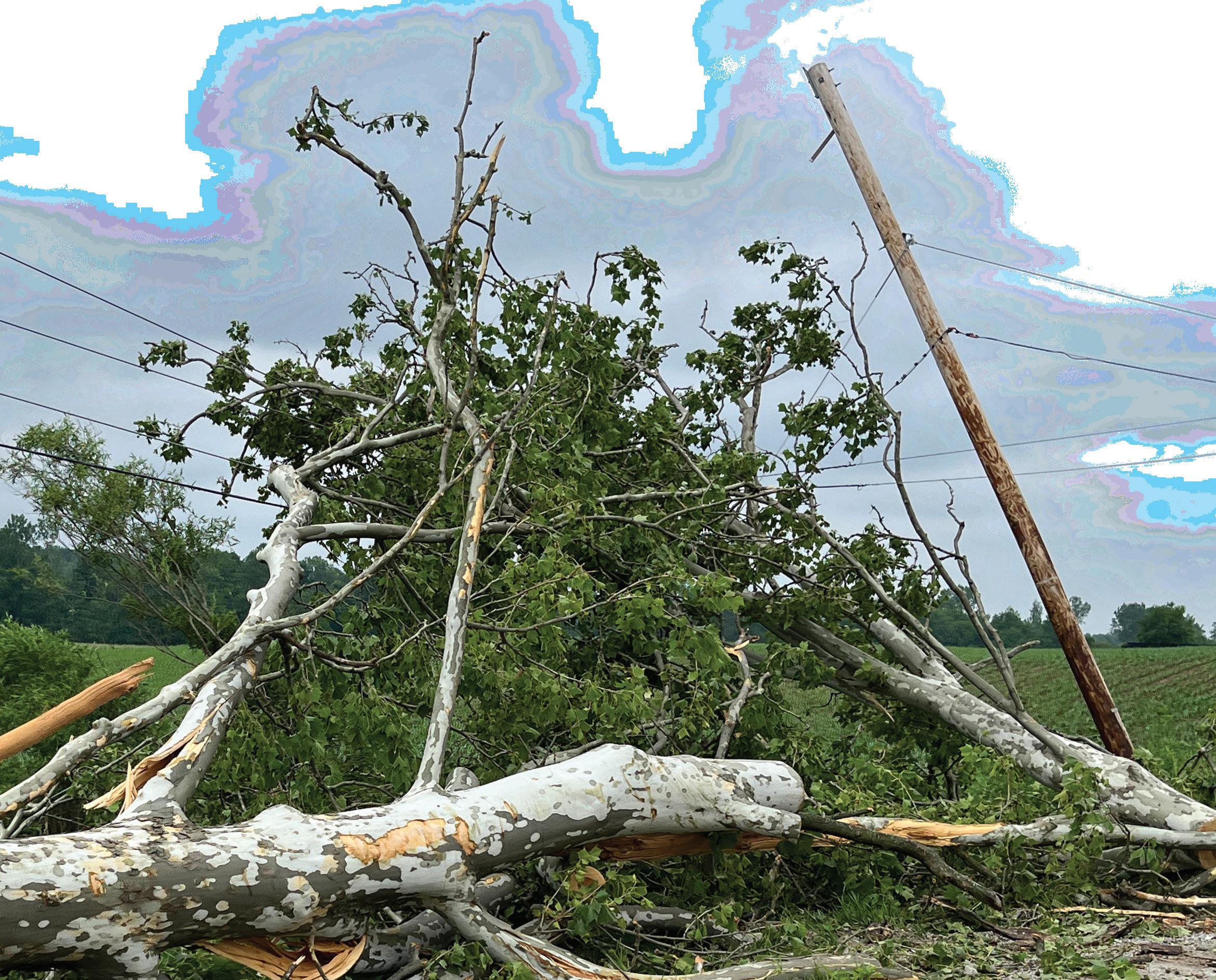
3 minute read
POWER LINES
Helping Hands
After summer storms caused widespread outages in Ohio, co-ops from near and far jumped in to help.
BY JEFF McCALLISTER
As Father’s Day approached this past June, so did a weather pattern that brought with it a series of storms across Ohio. The storms appeared initially to be strong, to be sure, but not out of line with the usual tempests that sweep through the Midwest every summer. Over the next few days, however, the event distinguished itself as one of the most damaging and expensive weather-related calamities Ohio’s electric cooperatives had ever witnessed. Analysis later showed that the first wave during the overnight hours of June 13–14 brought with it three tornadoes and a powerful macroburst storm just in a 53-minutes span, wreaking havoc on distribution and transmission systems across the state; all of the 24 electric distribution cooperatives in Ohio reported outages, including a few that suffered widespread damage — downed lines, broken poles — to their systems. As the co-ops organized resources to restore the systems to turn power back on to their members, the next several days brought alternating extreme heat and additional powerful storm systems that made the work of restoring service both more dangerous and more plentiful. Problems on AEP’s high-voltage transmission network resulted in more than 100,000 central Ohio homes and businesses having their power intentionally shut off for long stretches of time. Often, when summer (or winter) storms cause outages, the affected area is concentrated enough that the individual co-op can rally its own lineworkers to handle the repairs. Occasionally, it’s bad enough that a nearby co-op will jump in to offer assistance and equipment to restore power. This storm, however, officially classified as a derecho, affected so much of the state that Ohio co-ops initially had few workers to spare for those who were hit hardest. “This storm brought more damage to our cooperative than we’ve seen in the 28 years I’ve been here, and our neighboring cooperatives in Ohio were hit hard, too,” says Phil Caskey, CEO of Mount Gilead-based Consolidated Cooperative. So the call went out around the region, and by midday on the first full day after the first storm, 17 crews from Kentucky had hit the road to help. By the next morning, crews from Pennsylvania, Indiana, and Virginia had arrived
to pitch in. In all, workers came from 14 co-ops in six states to join those from Ohio and West Virginia on the job. “The great part of belonging to a network of not-for-profit cooperatives is that we have hundreds of like-minded utilities across the country who are willing to pitch in, and we made great use of those resources,” Caskey says. As each co-op’s power was restored, its linemen and those helping there moved on to the next affected area. Nearly all repairs were finished by June 23. “For total amount of damage, it will likely surpass both the January 2005 ice storm and June 2012 derecho, two of the worst weather events in recent history,” says Dwight Miller, who in his role as director of safety training and loss prevention at Ohio’s Electric Cooperatives, coordinated the efforts. In total, the jobs took nearly 13,000 hours of lineworker assistance. “We are so grateful to the folks who put their lives on hold to help us and to their home cooperatives who had to pick up the slack while they were gone, all so that our members could so quickly resume their own lives,” Caskey says. Miller noted that many Ohio co-ops were hit hard by the storm and still sent crews to co-ops with greater needs. “I’ve worked aid after several hurricanes,” Miller says. “The parts of Holmes and Wayne counties I saw right after this storm looked very similar to what I saw during Hurricane Hugo and Hurricane Katrina storm restoration — it was shocking to see such large trees down everywhere. The difference? A hurricane gives you time to plan.”
By the numbers
How Ohio electric cooperatives were affected Peak outage: about 72,000 Broken poles: more than 500 Co-ops requiring mutual aid: 7 Out-of-state mutual aid: 62 workers from 14 coops in six states put in about 7,600 hours of labor. In-state mutual aid: 67 workers from 15 Ohio coops put in about 5,300 hours of labor.
Workers from 14 cooperatives in six states — including the pair at left from Kenergy in Kentucky — came to Ohio to help repair distribution systems after a wave of June storms did widespread damage here.





